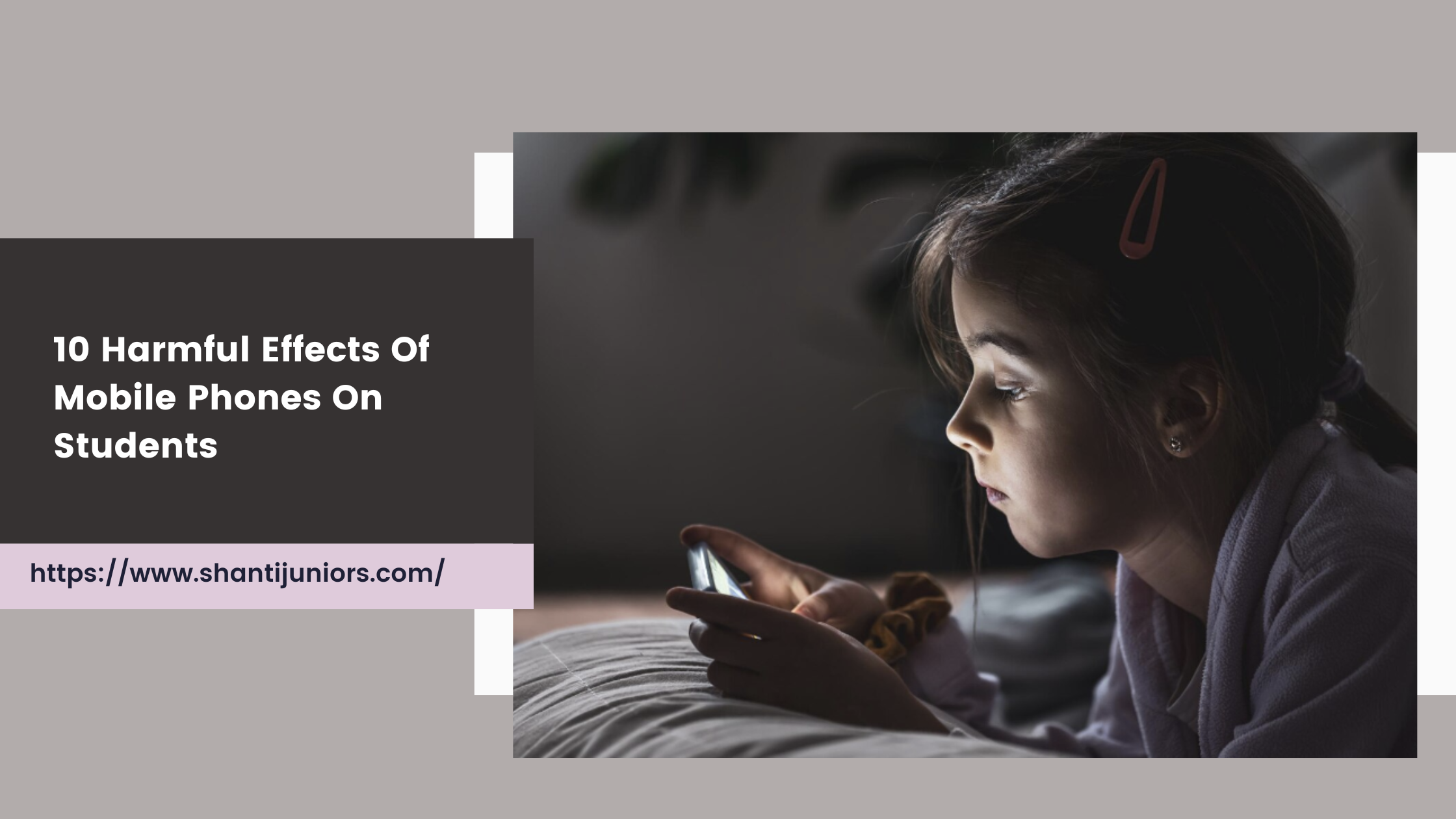

Discover the 10 harmful effects of mobile phones on students in this comprehensive article. Learn about the impact of excessive phone use on academic performance, mental health, and more.
In today's digital age, mobile phones have become an integral part of our daily lives, especially among students. While these devices offer convenience and connectivity, they also bring about various harmful effects that can impact students' well-being and academic performance. This article delves into the ten most significant harmful effects of mobile phones on students, highlighting the need for a balanced approach to technology usage.
Excessive screen time, particularly before bedtime, can disrupt students' sleep patterns, leading to insomnia and fatigue.
1.1 Impact on Academic Performance
Lack of quality sleep affects concentration, memory retention, and overall cognitive function, directly impacting students' academic performance.
1.2 Tips for Better Sleep
Encourage students to establish a tech-free bedtime routine and limit screen exposure at least an hour before sleeping.
Over-reliance on mobile phones can lead to decreased face-to-face interactions, contributing to feelings of loneliness and social isolation.
2.1 Effects on Mental Health
Isolation can exacerbate mental health issues such as anxiety and depression, posing significant challenges to students' emotional well-being.
2.2 Encouraging Social Interaction
Promote activities that foster real-life social connections, such as group study sessions or outdoor recreational activities.
The constant notifications and temptation to use phones during classes can result in reduced focus and academic engagement.
3.1 Impact on Learning
Distraction hampers information retention and active participation in classroom discussions, hindering the learning process.
3.2 Implementing Phone-Free Zones
Advocate for designated areas or times where mobile phone usage is restricted, allowing students to focus solely on their studies.
Mobile phones provide a platform for cyberbullying, exposing students to online harassment and negative social interactions.
4.1 Mental Health Implications
Cyberbullying can lead to increased stress, anxiety, and feelings of insecurity among students, affecting their mental health.
4.2 Promoting Cyber Safety
Educate students about responsible online behavior, reporting mechanisms for cyberbullying, and seeking support when faced with online threats.
Also Read: Shanti Juniors: Setting the Standard for Kindergarten
Prolonged use of mobile phones can contribute to poor posture, musculoskeletal issues, and digital eye strain among students.
5.1 Ergonomic Practices
Encourage ergonomic practices such as maintaining a proper sitting posture, taking regular breaks, and adjusting screen brightness to reduce strain.
5.2 Importance of Physical Activity
Highlight the importance of regular physical activity to counteract the sedentary nature of excessive phone usage.
Dependence on texting and social media interactions can diminish students' ability to engage in meaningful face-to-face communication.
6.1 Communication Skills Development
Offer opportunities for public speaking, group discussions, and interpersonal activities to enhance students' communication skills.
6.2 Balancing Digital and Real-world Interactions
Encourage a balance between online interactions and in-person communication to foster well-rounded social skills.
Excessive use of mobile phones can lead to addiction-like behaviors, where students struggle to disconnect from their devices.
7.1 Recognizing Addiction Signs
Educate students about the signs of smartphone addiction, such as anxiety when separated from the phone or neglecting other responsibilities.
7.2 Digital Detox Strategies
Promote digital detox periods where students engage in offline activities to reduce dependency on mobile devices.
Constant connectivity and exposure to social media can contribute to stress, anxiety, and low self-esteem among students.
8.1 Mental Wellness Initiatives
Introduce mindfulness practices, counseling services, and peer support groups to address mental health challenges associated with mobile phone usage.
8.2 Encouraging Healthy Coping Mechanisms
Teach students healthy ways to manage stress, such as exercise, hobbies, and spending quality time with friends and family.
Sharing personal information and engaging in online activities can expose students to privacy breaches and cyber threats.
9.1 Cybersecurity Awareness
Educate students about privacy settings, safe online browsing habits, and the importance of protecting personal information.
9.2 Responsible Digital Citizenship
Empower students to make informed decisions online, recognize phishing attempts, and report suspicious activities.
Excessive phone use can strain interpersonal relationships, leading to misunderstandings, conflicts, and feelings of neglect.
10.1 Building Healthy Relationships
Encourage open communication, active listening, and setting boundaries to nurture healthy relationships despite digital distractions.
10.2 Quality Time Practices
Promote unplugged activities and designated family time to strengthen bonds and reduce reliance on mobile devices.
Q: How can parents help mitigate the harmful effects of mobile phones on students?
Parents can set screen time limits, encourage outdoor activities, and foster open dialogues about responsible technology use.
Q: What are some signs indicating that a student may be experiencing mobile phone addiction?
Signs include excessive screen time, withdrawal symptoms when without the phone, neglecting schoolwork or social interactions, and mood changes.
Q: Can mobile phones be used positively in an educational context?
Yes, mobile phones can facilitate learning through educational apps, research access, and communication with peers and teachers.
Q: How can schools create a conducive environment for balanced mobile phone usage?
Schools can implement phone-free zones, educate students on responsible usage, and integrate digital literacy into the curriculum.
Q: What are the long-term implications of excessive mobile phone use during adolescence?
Long-term implications may include addiction, social skill deficiencies, mental health issues, and reduced academic performance.
Q: What role do peer influences play in students' mobile phone usage habits?
Peer influences can significantly impact students' tech habits, leading to either responsible usage or excessive dependency based on peer norms.
In conclusion, while mobile phones offer undeniable benefits, their excessive use among students can lead to various harmful effects encompassing physical, mental, and social aspects. It's crucial for educators, parents, and students themselves to adopt a balanced approach, emphasizing responsible digital citizenship and mindful technology use. By addressing these harmful effects proactively, we can create a healthier and more productive learning environment for students.